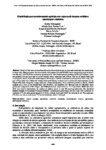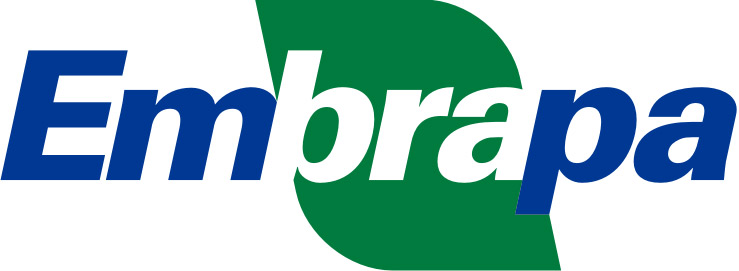Por favor, use este identificador para citar o enlazar este ítem:
http://www.alice.cnptia.embrapa.br/alice/handle/doc/1035210Registro completo de metadatos
| Campo DC | Valor | Lengua/Idioma |
|---|---|---|
| dc.contributor.author | TRABAQUINI, K. | pt_BR |
| dc.contributor.author | LUIZ, A. J. B. | pt_BR |
| dc.contributor.author | EBERHARDT, I. D. R. | pt_BR |
| dc.contributor.author | SCHULTZ, B. | pt_BR |
| dc.contributor.author | FORMAGGIO, A. R. | pt_BR |
| dc.contributor.author | ATZBERGER, C. | pt_BR |
| dc.date.accessioned | 2016-01-26T11:11:11Z | pt_BR |
| dc.date.available | 2016-01-26T11:11:11Z | pt_BR |
| dc.date.created | 2016-01-26 | pt_BR |
| dc.date.issued | 2015 | pt_BR |
| dc.identifier.citation | In: SIMPÓSIO BRASILEIRO DE SENSORIAMENTO REMOTO, 17., 2015, João Pessoa. Anais... São José dos Campos: INPE, 2015. p. 4482-4489. | pt_BR |
| dc.identifier.uri | http://www.alice.cnptia.embrapa.br/alice/handle/doc/1035210 | pt_BR |
| dc.description | Abstract: Brazil still has not a system based in earth observation images to map and monitoring the aimed crops in large scale. Many programs have been made with Landsat-like and MODIS data to monitoring crops in Brazil, but only the CANASAT has worked in operation level. The clouds and unit products (UPS) size in Brazil, have not permitted the use these data to correct classify maize, sugarcane and soybean. The use of sample frame and visual pixels classification with multitemporal OLI images could be a solution to monitor these three crops. The goal of this study was evaluate the sample frame performance to maize (c1), soybean (c2) and sugarcane (c3) in Paraná (PR) State using OLI images and pixel visual classification. Were used four periods to classify 20.000 random pixels over all the Paraná State: (p1) Nov/Dec, (p2) Jan/Feb, (p3) Mar/Apr and (p4) May/Jun. Each period was compost for 4 OLI images, and 5.000 pixels were classified as c1, c2, c3 and others. IBGE data from 2012 were used to determinate the number of random pixels in each PR mesoregion/stratum. The Stratified Random Sample by Maximum Corrected (SRSMC) showed good performance for tree crops. The coefficient of variation (CV) for each period ranged of 1.42 for soybean in p2 until 16.87 for soybean in p4. The sugarcane CVs have not varied ( and maize CV had the minimum value (2.16) in p4. | pt_BR |
| dc.language.iso | por | pt_BR |
| dc.rights | openAccess | pt_BR |
| dc.subject | Statistical sampling | pt_BR |
| dc.subject | Amostragem estatística | pt_BR |
| dc.subject | Romote sensing | pt_BR |
| dc.title | Metodologia para monitoramento agrícola com emprego de imagens orbitais e amostragem estatística. | pt_BR |
| dc.type | Artigo em anais e proceedings | pt_BR |
| dc.date.updated | 2016-01-26T11:11:11Z | pt_BR |
| dc.subject.thesagro | Estatística agrícola | pt_BR |
| dc.subject.thesagro | Agricultura | pt_BR |
| dc.subject.thesagro | Sensoriamento Remoto | pt_BR |
| dc.subject.nalthesaurus | Agricultural statistics | pt_BR |
| dc.subject.nalthesaurus | Sampling | pt_BR |
| dc.subject.nalthesaurus | agriculture | pt_BR |
| dc.subject.nalthesaurus | remote sensing | pt_BR |
| riaa.ainfo.id | 1035210 | pt_BR |
| riaa.ainfo.lastupdate | 2016-01-26 | pt_BR |
| dc.contributor.institution | KLEBER TRABAQUINI, INPE; ALFREDO JOSE BARRETO LUIZ, CNPMA; ISAQUE DANIEL ROCHA EBERHARDT, INPE; BRUNO SCHULTZ, INPE; ANTONIO ROBERTO FORMAGGIO, INPE; CLEMENT ATZBERGER, University of Natural Resources and Life Sciences, Viena. | pt_BR |
| Aparece en las colecciones: | Artigo em anais de congresso (CNPMA)  | |
Ficheros en este ítem:
| Fichero | Descripción | Tamaño | Formato | |
|---|---|---|---|---|
| 2015AA003.pdf | 667.88 kB | Adobe PDF |  Visualizar/Abrir |









